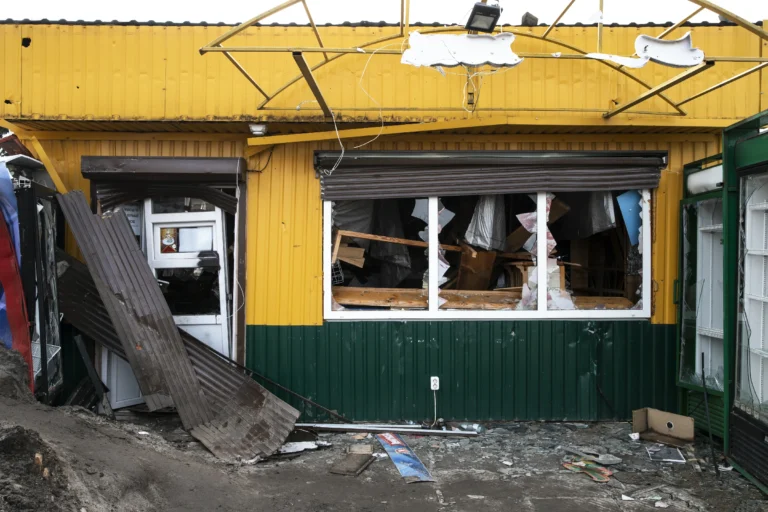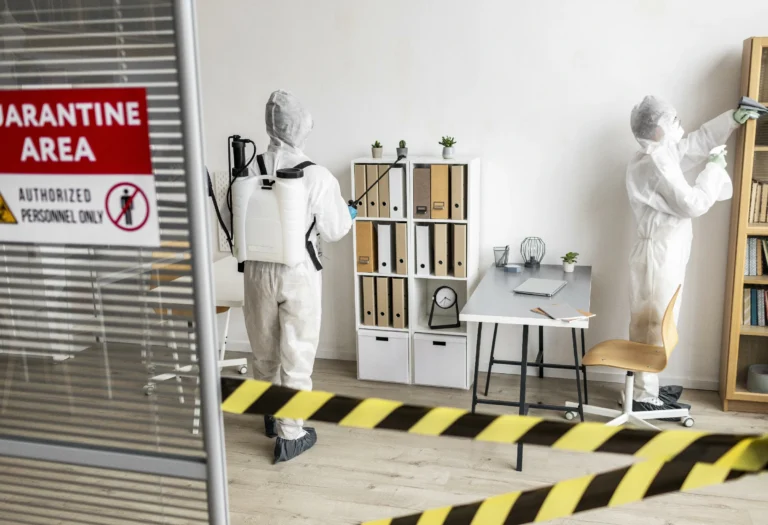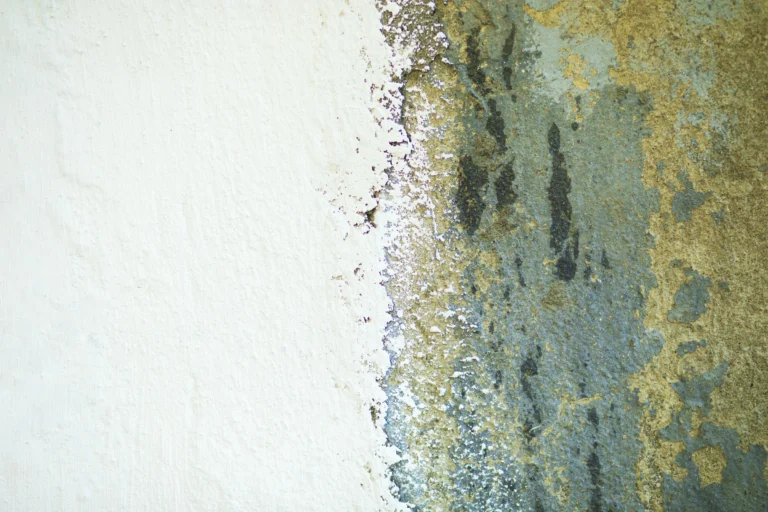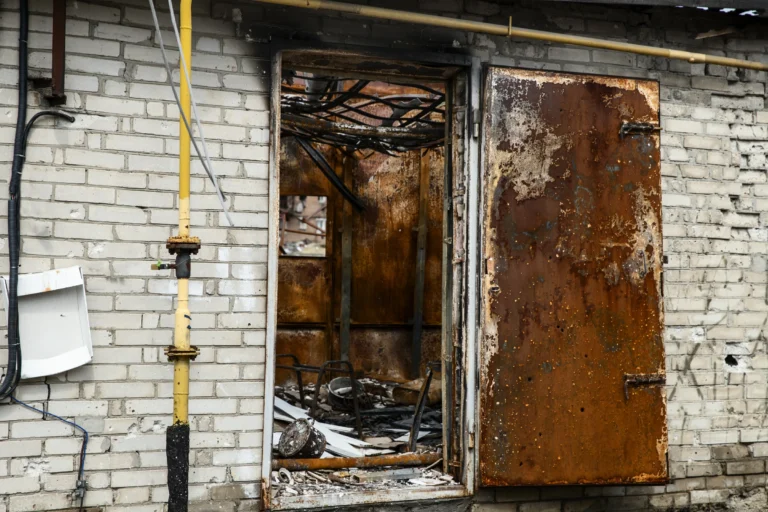In the unsettling aftermath of a fire incident, the steps you take can significantly impact both the short-term safety and long-term recovery process. Dealing with fire damage is not only about addressing the physical destruction but also about ensuring the safety and well-being of those affected. While the experience can be overwhelming, understanding the immediate actions to take can help mitigate further damage, streamline the recovery process, and provide a sense of control during a chaotic time. In this guide, we’ll explore the top Fire incident tips for the crucial first steps following a fire incident, from ensuring safety and assessing damage to initiating the restoration process. Our goal is to equip you with the knowledge to navigate this challenging situation with confidence and clarity.
 Ensuring Safety First:
Ensuring Safety First:
Safety Assessment:
After a fire incident, the foremost priority is to ensure that it is safe to re-enter the property. Here are some guidelines for assessing safety:
- Wait for Official Clearance:
Do not re-enter the affected area until fire officials have declared it safe. Fires can cause hidden dangers in structures, including the risk of collapse or reignition. - Inspect for Structural Stability:
If allowed to re-enter, cautiously assess the structural stability of your property. Look out for signs of damage to key support structures, ceilings, and floors. - Check for Electrical Hazards:
Be wary of any electrical systems that may have been compromised. Do not attempt to restore electricity or use electrical appliances until they have been checked by a professional. - Smell for Gas:
If you smell gas, do not switch on lights or use anything that could cause a spark. Leave the building immediately and call the gas company or emergency services. - Avoid Water Pools:
Standing water may be electrically charged from damaged electrical systems. Avoid stepping in puddles inside the fire-damaged area.
Health Precautions:
Smoke inhalation and exposure to contaminated areas can pose significant health risks. Here are some tips to handle these concerns:
- Use Protective Gear:
Wear appropriate protective clothing, including gloves, masks, and sturdy footwear, to safeguard against sharp objects, soot, and potentially harmful debris. - Beware of Smoke and Soot:
These can be hazardous to your health. Avoid inhaling soot or smoke residues by wearing a mask, and minimize direct contact with affected materials. - Ventilate the Area:
Open windows and doors to air out the premises, but only if it’s safe to do so. Proper ventilation can reduce the concentration of smoke and soot in the air. - Seek Medical Attention for Symptoms:
If you or anyone else experiences respiratory distress, headaches, dizziness, or other symptoms after exposure to a fire environment, seek medical attention immediately.
 Securing the Property:
Securing the Property:
After ensuring personal safety and assessing the immediate risks, the next crucial step is to secure your property. This involves:
Contacting Authorities:
Immediately notify the fire department and local police about the incident. The fire department can provide valuable guidance on the safety and stability of the building, while police presence can help prevent potential looting or vandalism, which can be a concern in unoccupied, fire-damaged properties.Securing the Premises:
Take steps to secure your property to prevent further damage or theft. This may involve boarding up windows and doors,
covering damaged roofs with tarps, and securing any breaches in the building’s exterior. It’s important to protect the property from the elements and unauthorized access. If you’re unable to do this yourself, consider hiring a professional service to ensure it’s done safely and effectively.
Limit Access:
Only allow entry to the property for essential assessment and repair work. Keeping the number of people on-site to a minimum reduces the risk of injury and interference with the restoration process.Remove Valuables:
If it’s safe to do so, remove valuable items from the property to protect them from damage or theft. This includes personal items, important documents, and any irreplaceable belongings.
By taking these steps, you can help protect your property from further damage and prepare it for the restoration process. Remember, your safety is paramount, so ensure that any actions taken to secure the property do not put you or others at risk.
 Assessing the Damage:
Assessing the Damage:
Once it is safe to do so, assessing the extent of the damage is a critical next step. This will be essential for insurance claims and planning the restoration process.
Initial Damage Assessment:
Begin with a careful inspection of the property to understand the scope of the damage. This includes looking for signs of structural damage, inspecting the condition of walls, floors, and ceilings, and identifying areas affected by smoke, soot, or water. Note any damage to personal belongings as well. However, remember that safety is paramount – do not enter areas that seem unsafe or unstable.Documenting for Insurance:
Accurate documentation is key for insurance claims. Take detailed photos or videos of all damaged areas and items. This should include wide shots to give context as well as close-ups to show specific damage. Make a comprehensive list of damaged or lost items. Include descriptions, the approximate value, and, if possible, receipts or proof of purchase. Keep a record of any emergency repairs or expenses incurred as a result of the fire, such as temporary accommodations or emergency board-up services.
Remember, while documenting the damage, don’t discard any damaged items until after the insurance company has had a chance to review them, unless they pose a health hazard. This thorough documentation will be invaluable in ensuring that your insurance claim accurately reflects the extent of the damage and helps facilitate a smoother claims process.
 Handling Smoke and Soot:
Handling Smoke and Soot:
After a fire incident, dealing with smoke and soot is crucial to prevent further damage to your property and maintain a healthy environment.
Understanding Smoke Damage:
Smoke damage can vary depending on the nature of the fire and the materials burned. For instance, protein fires (burning meat or poultry) produce a greasy residue, while synthetic materials can leave a sticky soot. These residues can be acidic and, if not cleaned properly, can cause surfaces to deteriorate or discolor over time.Immediate Cleaning Tips:
Before undertaking any cleaning, it’s essential to
wear protective gear like gloves and masks to avoid inhaling soot or coming into direct contact with it. Here are some immediate steps you can take:
- Ventilation:
Open windows and doors to air out the property and reduce the concentration of smoke and soot in the air. - Dry Soot Removal:
Use a dry sponge or a vacuum with a HEPA filter to gently remove soot from surfaces. Avoid using water or liquid cleaners initially, as they can cause soot to smear. - Fabrics and Upholstery:
Remove and clean any fabrics that have been affected by smoke or soot, such as curtains, cushions, and clothing. These items may require professional cleaning to remove the odors and residues completely. - Surfaces Cleaning:
For hard surfaces like countertops and furniture, use a mild soap or a cleaning product specifically designed for soot removal. Be gentle to avoid driving soot deeper into porous materials. - Air Filtration:
Consider using air purifiers with HEPA filters to help remove particulate matter from the air.
Remember, while some smoke and soot damage can be handled through DIY methods, extensive or persistent residues often require professional cleaning to fully restore affected surfaces and ensure a healthy living environment. It’s important to assess the situation carefully and seek expert help when needed.
 Dealing with Water Damage:
Dealing with Water Damage:
In many fire incidents, water damage from firefighting efforts can be as significant as the fire damage itself. Here’s how to address it:
Post-Fire Water Issues:
Water used to extinguish the fire can soak into walls, carpets, furniture, and other areas, leading to potential issues like swelling, warping, and mold growth. It’s important to remove standing water as quickly as possible using pumps or wet-vacs and then focus on drying out the affected areas. Open windows and use fans or dehumidifiers to aid in the drying process.Preventing Mold Growth:
The combination of water and warm conditions can create an ideal environment for mold growth. To prevent this:- Ensure thorough drying: Mold thrives in moist environments, so complete drying is critical. This might take several days. Keep air moving around the affected areas.
- Inspect for hidden moisture: Water can seep into hidden areas like beneath carpets, inside walls, and in ceiling spaces. These areas might require professional attention to ensure they are properly dried out.
- Use mold inhibitors: After the area is dried, apply mold inhibitors to surfaces before painting or caulking. These products can be found in most hardware stores.
- Regularly inspect the area: Over the following weeks, keep an eye on the affected areas for any
signs of mold growth. If you spot mold, it needs to be addressed immediately to prevent it from spreading.
Taking these steps after a fire can significantly reduce the risk of water damage and mold growth. However, if the water damage is extensive, it might be necessary to contact professional restoration services. They have the equipment and expertise to handle large-scale drying and can ensure that hidden moisture is thoroughly addressed. Remember, the key to preventing mold growth is a swift and thorough drying process, combined with vigilant monitoring in the aftermath of the incident.
 Contacting Professional Services:
Contacting Professional Services:
After a fire incident, the complexity and extent of damage often require the expertise of professional restoration services. Here’s how to go about hiring and working with them:
Hiring Restoration Services:
- Research and References:
Start by researching local restoration companies. Look for reviews, testimonials, and before-and-after photos of their work. Personal recommendations from friends or family can also be invaluable. - Verify Credentials:
Ensure the company is licensed, insured, and carries the necessary certifications for fire damage restoration. This is crucial for both the quality of work and your peace of mind. - Get Multiple Estimates:
It’s wise to get estimates from several companies to compare services and prices. However, remember that the cheapest option isn’t always the best. Quality and reliability are paramount. - Ask Questions:
Don’t hesitate to ask specific questions about their process, equipment, and experience with situations similar to yours. A reputable company will be transparent and willing to provide all the information you need.
- Research and References:
Understanding Their Role:
- Assessment:
A professional service will start with a thorough assessment of the damage. This involves inspecting the property to identify all areas affected by fire, smoke, water, and soot. - Immediate Measures:
They may take immediate measures to prevent further damage, such as boarding up windows or placing tarps over damaged roofs. - Water Removal and Drying:
If there is water damage, this will be their immediate focus. Professional-grade equipment is used for water extraction and drying. - Soot and Smoke Removal:
Specialized techniques and equipment are used to clean soot from walls, ceilings, and other surfaces and to remove smoke odor. - Restoration:
The final step involves repairing and restoring the property. This can range from minor repairs, such as painting and replacing carpets, to major reconstruction of entire rooms.
- Assessment:
Working with professional restoration services can alleviate much of the stress and uncertainty following a fire incident. They have the expertise to handle the complexities of fire damage and can help in returning your property to its pre-fire condition.
 Managing Personal Well-being:
Managing Personal Well-being:
Experiencing a fire incident can be emotionally overwhelming, not just for the property owner but also for family members or employees involved. It’s crucial to address these emotional aspects and seek appropriate support.
Emotional Impact:
- Recognize the Trauma:
Acknowledge that feeling disoriented, stressed, or even heartbroken after such an incident is normal. A fire can be a traumatic event, and it’s important to give yourself and others the space to process these emotions. - Talk About It:
Don’t hesitate to share your feelings with friends, family, or a counselor. Talking can be a powerful way to cope with the emotional strain of the situation. - Routine and Normalcy:
Try to maintain a regular routine as much as possible. It helps in bringing a sense of normalcy amidst the chaos. - Self-Care:
Engage in self-care activities that you find calming and restorative. Whether it’s reading, exercising, or practicing meditation, find what helps you to de-stress.
- Recognize the Trauma:
Seeking Support:
- Professional Counseling:
Consider seeking professional help if you or your family members are struggling to cope. Counselors or therapists specializing in trauma can provide valuable support. - Community Resources:
Look for community resources available for fire victims. Local community centers, religious organizations, and non-profits often have programs to assist with both emotional and practical needs. - Support Groups:
Joining a support group with others who have experienced similar incidents can provide comfort and advice on dealing with the aftermath.
- Professional Counseling:
It’s important to remember that recovering from a fire incident isn’t just about the physical restoration of the property but also about caring for the emotional well-being of those affected. Seeking and accepting help can be vital in navigating the challenging period following a fire
 Conclusion:
Conclusion:
In conclusion, the immediate actions taken following a fire incident are crucial in ensuring safety, minimizing further damage, and setting the stage for effective restoration. Remember, the first priority is always safety – ensuring that the environment is safe to re-enter and that health precautions are in place. Once safety is assured, it’s important to quickly assess and document the damage for insurance purposes and begin the process of cleaning and restoration.
Dealing with smoke, soot, and water damage promptly can prevent additional issues such as persistent odors and mold growth. However, recognizing the limits of what can be safely and effectively handled on your own is key. In many cases, especially where structural damage or hazardous conditions are present, enlisting professional
restoration services is not just advisable but necessary. These professionals have the expertise, equipment, and experience to handle the complexities of fire damage restoration safely and efficiently.
Finally, amidst the focus on physical restoration, it’s crucial to not overlook the emotional impact of such an incident. Providing support to yourself and others, seeking help when needed, and taking steps toward emotional recovery are just as important as the physical repair of the property.
Taking these fire incident tips steps following a fire can feel overwhelming, but they are essential in navigating the path to recovery. By prioritizing safety, being thorough in your response, and seeking the right help, you can overcome the challenges posed by fire damage and restore both your property and peace of mind.
Storm/Disaster Recovery “Rapid Response for Weather-Related Emergencies” Storm/Disaster Recovery When storms or disasters strike, the aftermath can be overwhelming. Alpha Construction & …
Alpha Construction & Restoration Beverly Hills Emergency services are available 24/7 CONTACT US NOW! Contact us now! Our services We provide the …
Biohazard/Crime Scene Cleaning “Professional and Compassionate Cleanup Solutions” Biohazard/Crime Scene Cleaning Service Handling biohazard and crime scene situations requires not only technical …
Alpha Construction & Restoration Arcadia Emergency services are available 24/7 CONTACT US NOW! Contact us now! Our services We provide the best …
Alpha Construction & Restoration Simi Valley, CA Emergency services are available 24/7 CONTACT US NOW! Contact us now! Our services We provide …
Alpha Construction & Restoration Santa Clarita Emergency services are available 24/7 CONTACT US NOW! Contact us now! Our services We provide the …
Mold Remediation Service “Effective Solutions for Mold Challenges” Mold Remediation Mold infestations can be more than just an unsightly issue; they …
Alpha Construction & Restoration Long Beach, CA Emergency services are available 24/7 CONTACT US NOW! Contact us now! Our services We provide …
Odor Removal Service “Eliminating Unpleasant Odors, Restoring Freshness” Odor Removal Service Unpleasant odors in your home or business can be more than …
Water Damage Restoration “Rapid, Reliable Solutions for Water Damage Emergencies” Water Damage restoration Water damage can strike when you least expect …
Alpha Construction & Restoration San Gabriel, CA Emergency services are available 24/7 CONTACT US NOW! Contact us now! Our services We provide …
Alpha Construction & Restoration Pasadena Emergency services are available 24/7 CONTACT US NOW! Contact us now! Our services We provide the best …
Alpha Construction & Restoration Altadena Fire and Smoke Damage repair in Altadena CONTACT US NOW! Fire and Smoke Damage repair in Altadena …
Fire & Smoke Damage “Expert Care for Your Fire-Damaged Property” Smoke & Fire Damage Experiencing fire damage can be a traumatic …
Alpha Construction & Restoration Monrovia Emergency services are available 24/7 CONTACT US NOW! Contact us now! Our services We provide the best …
Hazardous & Toxic Material Cleanup Service “Safeguarding Environments from Hazardous Substances” Hazardous & Toxic Material Cleanup Service Handling hazardous and toxic materials …
Alpha Construction & Restoration El monte Emergency services are available 24/7 CONTACT US NOW! Contact us now! Our services We provide the …
Alpha Construction & Restoration Santa Monica Emergency services are available 24/7 CONTACT US NOW! Contact us now! Our services We provide the …
Alpha Construction & Restoration Pasadena Fire and Smoke Damage repair in Pasadena CONTACT US NOW! Fire and Smoke Damage repair in Pasadena …
Alpha Construction & Restoration San Dimas, CA Emergency services are available 24/7 CONTACT US NOW! Contact us now! Our services We provide …
Alpha Construction & Restoration Burbank Emergency services are available 24/7 CONTACT US NOW! Contact us now! Our services We provide the best …
Alpha Construction & Restoration Alhambra Emergency services are available 24/7 CONTACT US NOW! Contact us now! Our services We provide the best …
Alpha Construction & Restoration La crescenta Emergency services are available 24/7 CONTACT US NOW! Contact us now! Our services We provide the …













